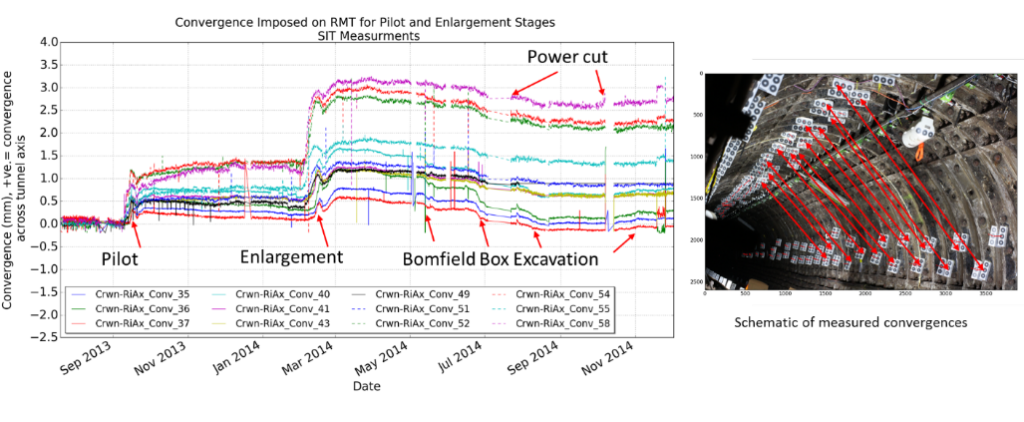Recent advances in digital image quality have reached the stage of renewing existing surveying techniques. The use of DIC (or PIV) has been implemented in the field for structural health monitoring of infrastructure assets. We have shown the use of DIC for monitoring a distortion of an old tunnel subjected to a new tunnel construction nearby (Alhaddad et al., 2019). The displacement resolution is shown to be better than 0.012 mm for convergence and 0.008 mm for the radius of curvature (ROC) measurement.
Structure from Motion (SFM) is a system that is able to simultaneously recover a 3D point cloud model and camera positions using only images. Some SFM systems have recently been commercialized. The software enables users to create a 3D point cloud model from uploaded photographs and allows users to browse and navigate through the photographs. It can simultaneously cope with free camera motion and more complex geometry of the scene (Chaiyasarn et al., 2016). The accuracy is becoming close to that of a traditional laser scanning method.
Visual inspection is commonly used for detecting anomalies such as cracks, spalling, and staining. Photographs and videos are used to record anomalies over years. As image collections often become large and difficult to organize and browse, improving the ways to access old images can lead to substantial progress in the effectiveness of monitoring. This is particularly true for monitoring locations like a deep shaft, where inspectors cannot easily access the inspection site (Stent et al., 2016).
Convergence monitoring of an existing tunnel affected by other nearby underground construction in London (Alhaddad et al. 2019)
Structure-from-Motion (SfM) concept to create a 3D model, (b) SIFT matching algorithm to identify the same points in two images, (c) 3D construction of a Barcelona Metro tunnel (Chaiyasarn, 2011), and (d) 3D construction of a rock slope in Northern Ireland (Stent, 2014)

